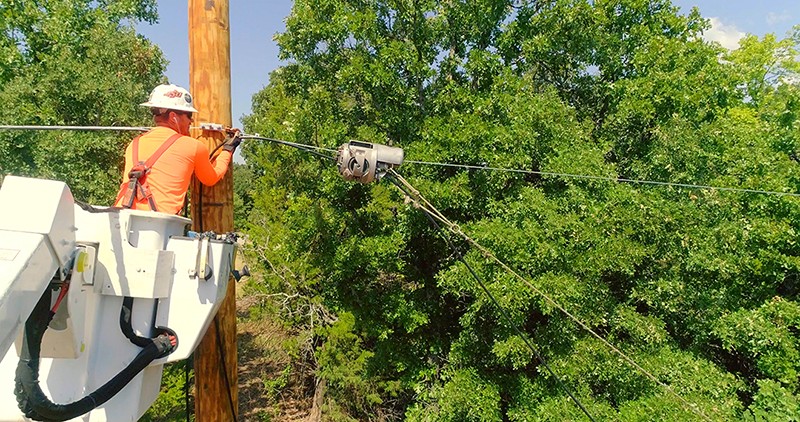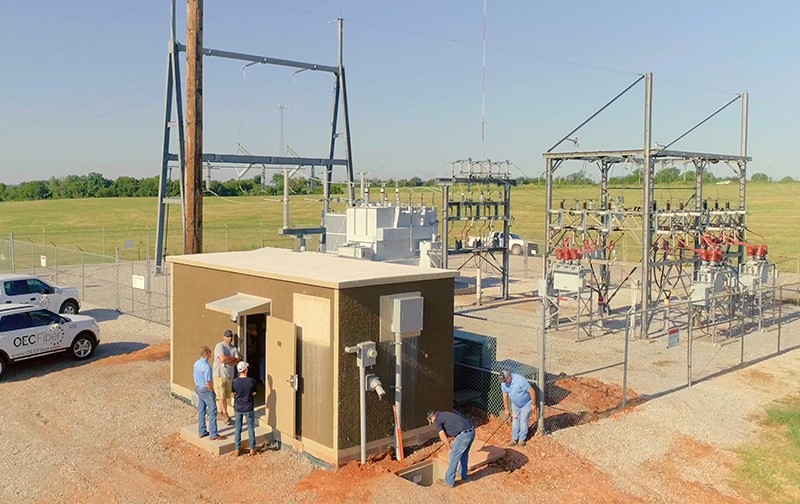Financed through CFC, the approximately 5,500-mile fiber project—launched through OEC subsidiary OEC Fiber—was conceived three years ago in response to members’ need for reliable broadband.
“OEC Fiber was born out of members’ requests for the cooperative to enter the broadband arena,” OEC CEO Patrick Grace explained. “Many members had expressed frustration with the limited selection—or in some instances, the complete lack—of affordable, reliable, high-speed internet options in their areas.”
Before committing to the project, OEC conducted two general feasibility studies and a survey of 1,000 randomly selected residential members to help assess interest. OEC also brought in several consultants to discuss options for offering fiber services.
“These consultants presented possible models to our board of directors and our 2017 board retreat was full of broadband discussions,” Grace said. “Conference calls and visits to other co-ops with fiber projects were also part of our due diligence process, and employees in various OEC departments helped us analyze the project from all angles.”

2,300 Miles of Fiber Built and 11,000 Subscribers Since 2018
Construction began in early 2018, and as of this July, OEC Fiber had built more than 2,300 miles of fiber, and signed up more than 11,000 subscribers for its high-speed internet, TV and telephone services, with an overall take rate of nearly 38 percent.
“We are actively building fiber in many areas of our service territory and opening fiber zones as they are built,” Grace said. “Our focus is on our members and getting them connected, but in specific cases where it makes financial sense, we have also chosen to serve customers who receive their power from other electric providers, so we have many pockets of service available to non-members inside of our overall footprint.”
Another area of focus has been leveraging OEC Fiber’s assets to expand smart grid capabilities for the cooperative, including looping all 22 of OEC’s substations into the fiber network. “While we already had a significant smart grid before the broadband project, the additional fiber enabled us to extend it out to downline SCADA devices as well as moving our existing smart grid technology to fiber,” Grace said. “This transition to OEC Fiber made the communication much faster, much more secure and 100 percent in our direct control.”

Access to Affordable and Reliable Internet is Changing Subscribers Lives
The response from subscribers has been very positive. “We hear from members every day about how access to affordable and reliable internet has changed their lives,” Grace said. “Not only are our residential subscribers able to do homework at home, stream TV shows and movies, access telemedicine, utilize smart home devices and more, but our business subscribers are able to use cloud-based services and stay competitive in the always-connected, fast-paced world we live in now.”
“We also see many economic benefits of our services in the communities we serve,” Grace added. “Many of these smaller communities can now offer businesses the same connectivity as large cities, which will entice more businesses to open locations in towns they may have never considered prior to OEC Fiber offering services in those areas.”
CFC Played Multiple Roles in Supporting OEC Broadband Project
CFC has provided a range of support services for OEC. “As a 100 percent CFC borrower, OEC reached out to CFC for one of our first conversations when deciding to embark on this fiber project,” Grace said. “CFC staff have played multiple key roles in supporting our project—especially keeping interest rates low, not just for us but for all CFC borrowers. In addition, using CFC’s Compass model, we were able to incorporate our fiber forecast into the electric side’s 10-year financial forecast to show the long-term effect of the project.”
In addition to financing from CFC, OEC also was awarded $1.7 million in federal funding for its broadband project through the U.S. Federal Communications Commission’s (FCC) Connect America Fund II reverse auction in 2018. As part of the Rural Electric Cooperative Consortium, OEC was one of 21 electric cooperatives from eight states awarded $186 million over 10 years in the auction. OEC hopes to win additional federal funding through the FCC’s Rural Digital Opportunity Fund auction scheduled for later this year.
OEC is Speeding Up Its Broadband Construction Plan
OEC’s broadband experience to date has been so positive, the cooperative decided to speed up its construction plan. “When we began this project, we anticipated a five-to-seven-year buildout,” Grace said. “However, after extensive financial analysis of our specific build and service territory, we decided to increase the speed of the buildout to two to three years instead. We are now looking at finishing our initial system build within the next year.”
“Like many electric cooperatives, we were initially hesitant to jump into a fiber project,” Grace added. “But after hearing about the need from our members, conducting months of research and feasibility studies, talking to anyone who would give us time to speak about their fiber project and lessons they had learned, having open and honest conversation with our board, staff and employees about the challenges and positives the project could bring, and finally deciding to go ‘all in,’ we are overwhelmed at how positive the project has been for OEC, OEC Fiber and our surrounding communities.”
